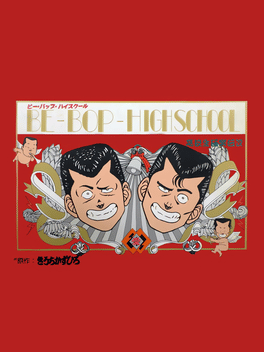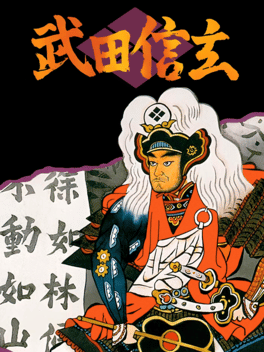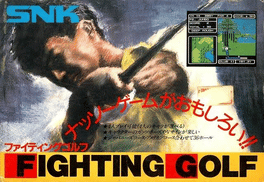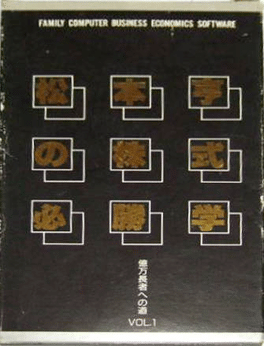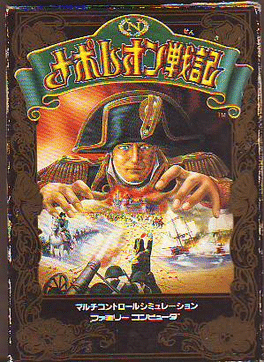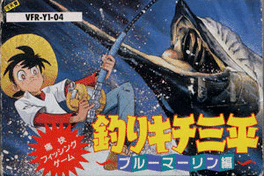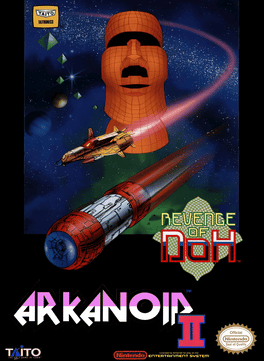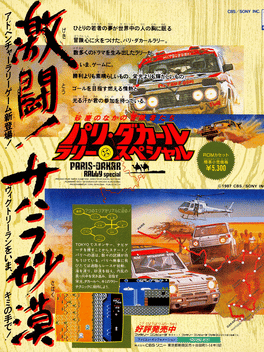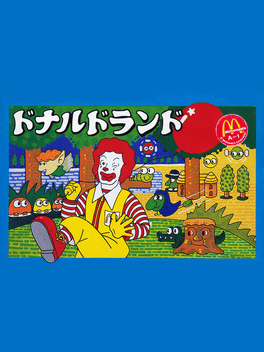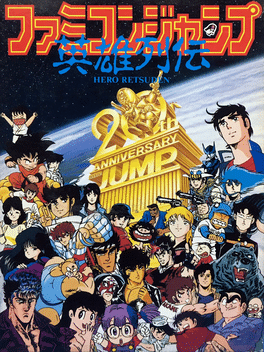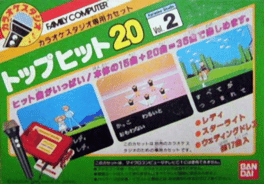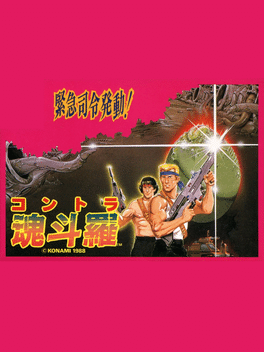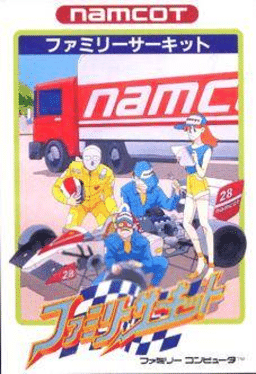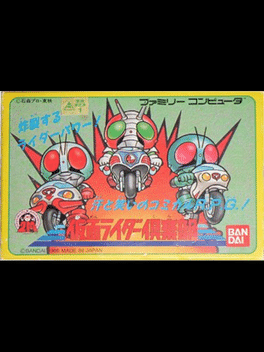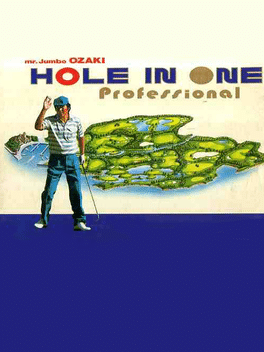New Family Computer Games - Page 37
-
Be-Bop High School: Koukousei Gokuraku Densetsu
1988
Be-Bop High School: Koukousei Gokuraku Densetsu is an Adventure game, developed and published by Data East, which was released in Japan in 1988. -
Takeda Shingen
1988
Takeda Shingen
1988
A turn-based war strategy sim developed by Another for the NES. Unlike its sequel, Shingen the Ruler, it was never released outside of Japan. -
Mighty Atom
1988
Mighty Atom
1988
Tetsuwan Atom is an action game developed by Home Data and published by Konami for the Famicom in Japan early on in 1988. The game stars Tetsuwan Atom, a popular early anime character who is better known as Astro Boy outside of Japan. Tetsuwan Atom was originally created in 1951 by Osamu Tezuka. The successful series started as a comic strip and was turned into a black and white animated series in 1963. It was one of the first (if not the first) animated TV series produced in Japan, and has influenced countless Japanese animated series that followed. The little robot-boy is one of Japan's most recognizable character. The story takes place in the future, at a time where humans and robots live together in harmony. The powerful robot-boy Atom lives with Professor Ochanomizu, an old scientist who takes good care of the little robot, and helps him fight crime and injustice. One day, burglars break into Professor Ochanomizu's lab and steal all of his money. It is now Atom's duty to recover the stolen loot. -
Fighting Golf
1988
Fighting Golf
1988
The player can choose between four different golfers, of which each Character has his or her own advantages and disadvantages. Lee Trevino is playable as a character named Super Mex (an actual nickname of his); other characters include Pretty Amy, Miracle Chosuke and Big Jumbo. Pretty Amy has limited range, but the easiest control ("control" refers to the length of the aiming guide). Miracle Chosuke and Super Mex have average attributes. Big Jumbo has the best range, but the worst control. Despite the title, no fighting is involved in the game, the title is Asian "Engrish." The player has to avoid sand traps, water hazards, rough ground and trees. The courses range from relatively straightforward fairways to elaborate arrangements of sand traps. The two courses available for play are the United States, which consists of mostly bunkers and super rough and the Japan course, consisting of water and tight boundaries. At the end of the game, the player is greeted with a photorealistic shot of the country club lodge ag -
Matsumoto Toru no Kabushiki Hisshougaku
1988
A stock-trading simulator for the NES that uses the name of famed Japanese financial adviser Matsumoto Tooru. It was developed by Imagineer and was never released outside of Japan. Matsumoto Tooru no Kabushiki Hisshou Gaku ("Matsumoto Tooru's Stock Success Knowledge") is a stock exchange simulation developed and published by Imagineer. The goal of the game is to make 100 million yen (approximately $1.3mil) in the stock market in the span of a single year via a series of shrewd financial decisions and listening to advice about which way a certain type of stock might turn. The game is fronted by Matsumoto Tooru, a nationally well-known financial adviser who is often considered to have an expansive knowledge of the Japanese stock market. The game also features the song "The Entertainer" by Scott Joplin. Though it focused on unusually complex subject matter for a video game, it sold enough copies to inspire a sequel that was released the following year. -
Napoleon Senki
1988
Napoleon Senki
1988
Napoleon Senki (ナポレオン戦記?, "Battles of Napoleon") is a real-time tactics strategy video game developed by Lenar and published by Irem in March 1988 for the Family Computer. In August that same year, Brøderbund announced that it would be released for the North American NES console as The Battlefields of Napoleon; which was eventually cancelled. This video game allows the player to re-enact the Napoleonic Wars using a bird's-eye view. Starting with earliest battles against the Holy Roman Empire to grab territory for the fledging French Republic during the French Revolutionary Wars in the year 1796, Napoleon would guide the French Revolutionary Wars until they ended in 1802. All the nations that were a participant in the Napoleonic Wars were included like Czarist Russia, Great Britain, and the Spanish Empire. Napoleon's first in-game battle would located in present-day Italy; making the battle equally important in Italian history as it was in French history. There are also battles in what would now cons -
Tsuri Kichi Sanpei: Blue Marlin-hen
1988
A fishing sim based on a manga license for the NES. It was developed by Victor Interactive and never released outside of Japan. Tsurikichi Sanpei: Blue Marlin-hen is a fishing sim based on a manga and eventual anime named Tsurikichi Sanpei, following the adventures of a preternaturally gifted young fisherman and his travails in various fishing competitions. The game is centered around one of these fishing competitions, where Sanpei has a limited amount of time to catch the largest blue marlin out of all the competitors. The player must make careful judgements and use their limited time wisely to find and hook the largest marlin they can before the competition ends. The first game based on the Tsurikichi Sanpei license, Blue Marlin-hen was released on the NES and the MSX around the same time in 1988. Later, there would be a sequel of sorts for the MSX only in 1989 and a PS1 game much later in 2002. In order to catch anything, the player must choose one of several regions of sea in which to fish. Areas which look -
Arkanoid: Revenge of Doh
1988
Eons have passed... yet despite apparent annihilation in the original ARKANOID game, Dimension-controlling force DOH has come back to life, and occupying the huge spacecraft ZARG, has entered our universe. ARKANOID-type spacefighter MIXTEC runs through long forgotten computer data until it finds the answer to this threat... VAUS 2 is launched and speeds towards the threatening alien presence, before it can extract its revenge... "Arkanoid II"! Unlike the original game, the sequel was released only in Japan. -
Arkanoid II
1988
-
Ballblazer
1988
-
Paris-Dakar Rally Special!
1988
A NES game based on the famed Paris-Dakar Rally, developed by ISCO. While ostensibly a racing game, the style of gameplay tends to change per level. Paris-Dakar Rally Special! is an unusual racing game in which the player must successfully win the Paris-Dakar Rally. However, in order to do so, the player is faced with a wide variety of odd challenges to overcome, a scant number of which actually involve racing. -
Donald Land
1988
Donald Land
1988
When the Gumon Family takes over McDonaldland and captures Ronald's friends including Grimace, Birdie, the Fry Guys, and others, it's up to the jolly clown himself to put an end to their vile machinations and eat hamburgers across numerous locales leading up to the final castle headquarters of the Gumon Family. -
Famicom Jump: Hero Retsuden
1988
Famicom Jump: Hero Retsuden is a 1989 role-playing video game for the Family Computer published by Bandai. The game commemorates the 20th anniversary of Shueisha's manga anthology Weekly Shōnen Jump. Set in a world that brings together many of the long-running titles that had appeared in the magazine, both of the past and present at the time of its release. The game consists of a main character wandering and encountering the many Jump heroes as they try to save the world from an alliance of many of the most powerful and evil of the Jump villains. -
Karaoke Studio Senyou Cassette Vol. 2
1988
Karaoke Studio Senyou Cassette Top Hit 20 Vol. 2 is the second add-on for the Karaoke video game Karaoke Studio, featuring twenty additional songs. It cannot be played without the original cartridge and microphone peripheral. All the game modes themselves remain unchanged. -
Contra
1988
Contra
1988
This is the Family Computer (Famicom) port of Contra. Even if the American and the Japanese port look similar and share the same art style and engine, the Japanese version has added content, with more animations in the backgrounds, new cheat codes and, most importantly, story cutscenes explaining the plot of the game. -
Family Circuit
1988
Family Circuit
1988
Family Circuit is a Racing game, developed by Game Studio and published by Namco, which was released in Japan in 1988. -
Kamen Rider Club: Gekitotsu Shocker Land
1988
Kamen Rider Club: Gekitotsu Shocker Land is an action adventure game developed for the Famicom and published by Bandai in Japan on February 3, 1988. It is based on Bandai's Kamen Rider franchise, a weekly science fiction story created by Japanese manga artist Shotaro Ishinomori which was published in Shōnen Magazine, as well as being aired on television. -
Jumbo Ozaki no Hole in One Professional
1988
A golf sim for the NES developed by HAL Laboratory and released in 1988 in Japan only. It uses the likeness of prolific Japanese professional golfer Masashi "Jumbo" Ozaki. HAL Laboratory, after creating many of Nintendo's golf games as a second party developer, decided to develop and publish their own golf title. Jumbo Ozaki no Hole in One Professional features the likeness of Japan's most prominent golf player, Masashi "Jumbo" Ozaki - the Jumbo nickname comes from his unusual height for a Japanese male: almost 6'. Though featured on the box art and in the title, Jumbo Ozaki makes no obvious appearance in-game. The game can be played as a single player Stroke Match, which allows the player to practice on each of the game's 36 holes across two different courses. The player can also play against another human, or rate their score against CPU opponents in the 1 Day and 4 Day modes. The player can also adjust the difficulty, which makes wind speed a much more important factor. -
Family Trainer 8: Totsugeki! Fuuun Takeshi-jou
1988
The eighth Family Trainer game produced by Bandai for the NES, Totsugeki! Fuun Takeshijou is based on the obstacle course TV show Takeshi's Castle. Family Trainer: Totsugeki! Fuun Takeshijou is based on the popular TV show Takeshi's Castle, where contestants are pitted against each other in a series of generally absurd physical challenges in order to storm the castle of a character based on Japanese entertainment icon "Beat" Takeshi Kitano. The game required that the player use the Family Trainer (known as the Power Pad elsewhere) accessory to complete a series of athletics-based challenges to reach the final boss round, which involved driving a small tank around and defeating opponents including Takeshi. -
Ripple Island
1988
Ripple Island
1988
An adventure game for the NES published by Sunsoft. A boy named Kyle must rescue the princess of a kingdom where very small humans and animals peacefully co-exist. Ripple Island (occasionally seen translated as "Lipple Island") is a graphic adventure game where the player interacts with the world using a series of commands, such as "pick up", "walk" or "use". Rather than the usual murder mystery games which were the trend at the time, Ripple Island instead adopts a fantasy storybook setting where smaller humans and friendly animals, such as raccoons and rabbits, co-exist peacefully. The kingdom is threatened by the arrival of Gerogeru, a self-styled Emperor of Darkness and giant frog, after he kidnaps the princess. Kyle, a young boy and the game's protagonist, is attempting to rescue her. The game was never released outside of Japan. It was, however, re-released as part of a Japan-only PS2 compilation based on Sunsoft's works. It also received a manga adaptation.
